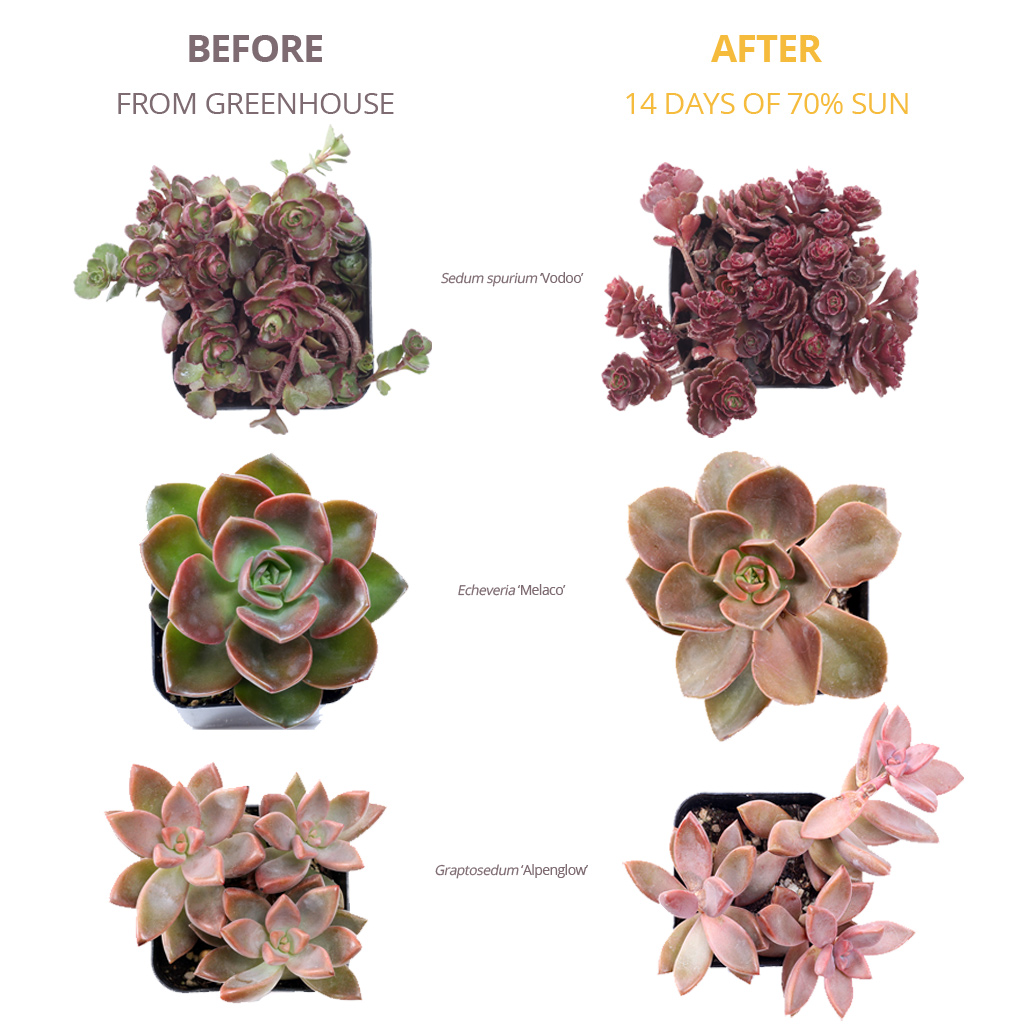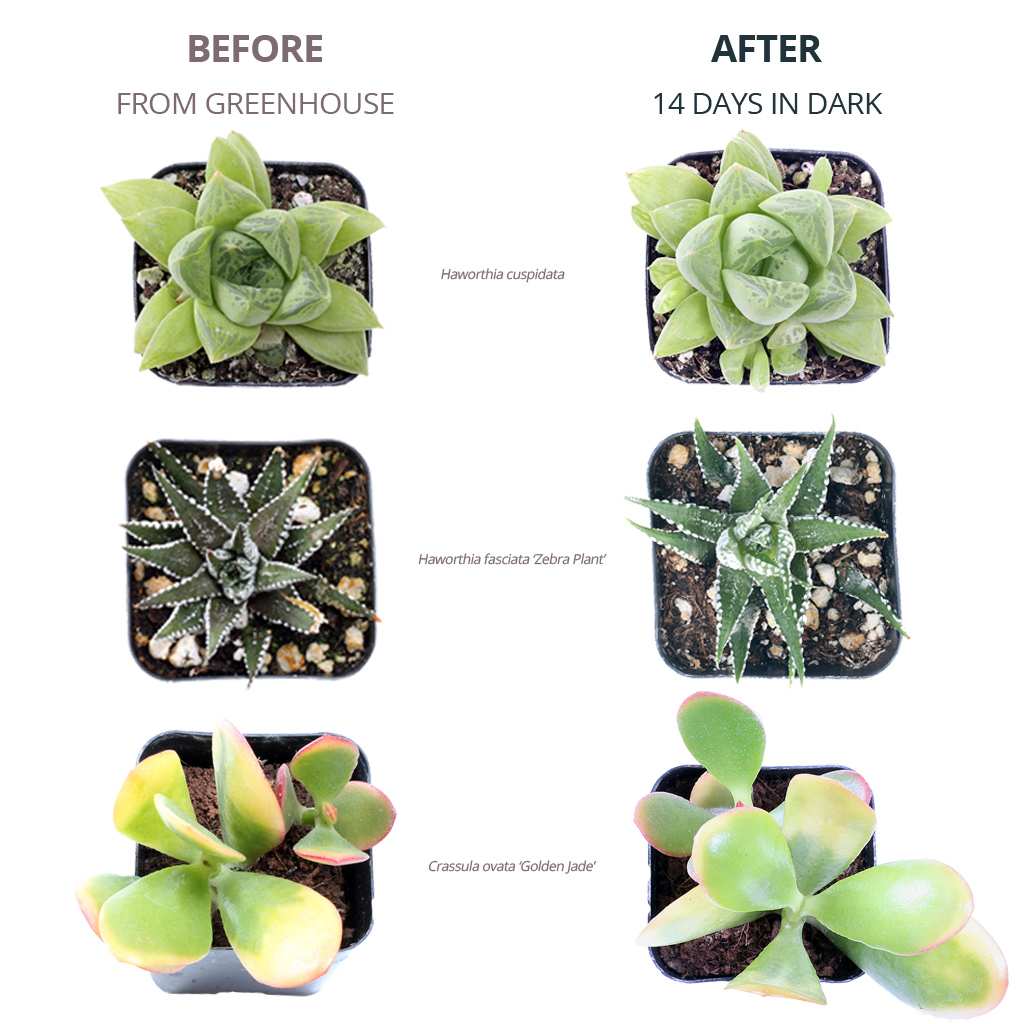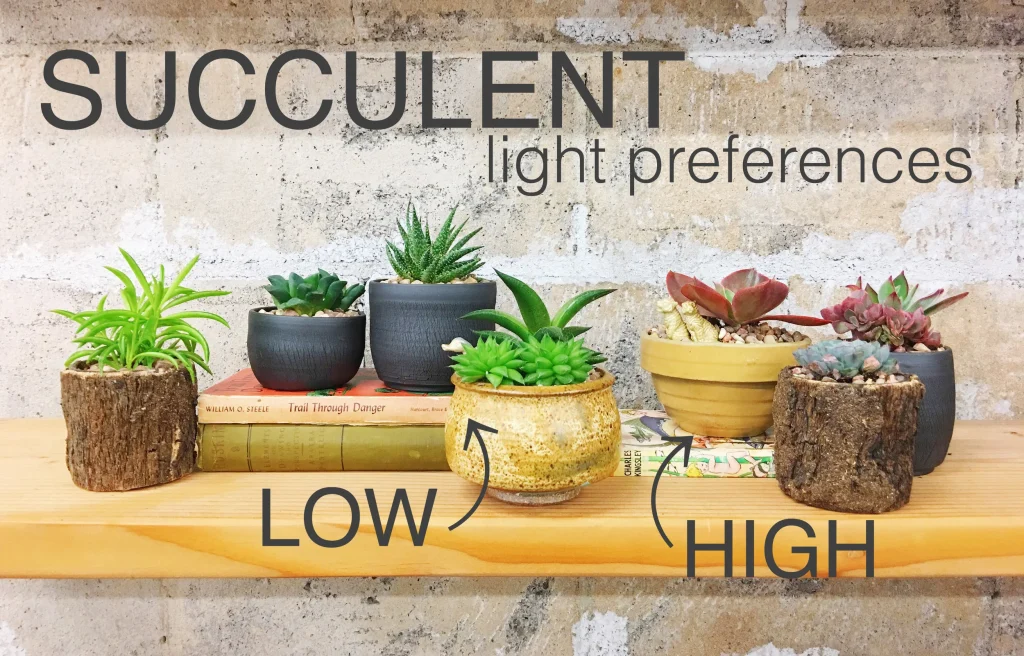Have you ever wondered if your beloved succulents need a lot of light to thrive? These charming plants, with their thick, fleshy leaves, are a favorite among plant enthusiasts.
Yet, the mystery of their light requirements often leaves many scratching their heads. If you’re keen on nurturing your succulents to perfection, you’re in the right place. Imagine walking into a room filled with vibrant, healthy succulents basking in the glow of just the right amount of light.
This could be your reality. Understanding the light needs of succulents is crucial for their growth and longevity. You might be surprised to learn how much or how little light they actually require. We’ll unravel the truth about succulent lighting needs, providing you with actionable insights to ensure your plants flourish. Whether you’re a seasoned gardener or a curious newbie, the secrets you’ll discover here could make all the difference in your plant care routine. Stay with us, and transform the way you care for your green friends.

Credit: mountaincrestgardens.com
Succulents And Their Unique Light Needs
Succulents thrive in bright, indirect sunlight, but excessive direct light can harm them. These resilient plants adapt to low light, yet they grow best with several hours of sunlight each day. Understanding their unique light needs helps ensure healthy growth and vibrant colors.
Succulents are adored for their resilience and beauty, but their light requirements often leave plant enthusiasts scratching their heads. Unlike many indoor plants, succulents have unique light needs that are crucial for their growth and health. Understanding these needs can make the difference between a thriving plant and a struggling one.
Understanding Succulents’ Natural Habitat
Succulents originate from arid regions where sunlight is abundant. They are accustomed to soaking up the sun’s rays for most of the day. However, bringing them indoors means adjusting their light exposure to match their natural habitat as closely as possible.
How Much Light Do Succulents Really Need?
Most succulents require bright, indirect light to thrive. A good rule of thumb is to provide them with at least six hours of sunlight daily. Placing them near a south or east-facing window can often meet their needs.
Signs Your Succulent Needs More Light
Is your succulent stretching out more than usual? This could be a sign of insufficient light. Other indicators include pale leaves or a noticeable lean toward the light source.
Can Succulents Get Too Much Light?
Yes, succulents can suffer from too much light, especially direct sunlight. This can cause sunburn, leading to brown or white patches on their leaves. It’s important to monitor their exposure, particularly in the summer months.
Personal Experience With Succulent Care
I once placed my favorite jade plant in a dim corner, thinking it would be fine. Within weeks, it started leaning and losing its vibrant green color. Moving it to a brighter spot revived it, proving how crucial light is for succulents.
Creating The Ideal Lighting Environment
Consider using sheer curtains to filter harsh sunlight or rotate your plants regularly for even light distribution. These small adjustments can significantly impact your succulent’s health. Have you noticed your succulents behaving differently with changes in light? Observing these changes can guide you in tweaking their environment. Your attentiveness ensures they not only survive but thrive in your home.

Credit: succulentsbox.com
Natural Habitat Of Succulents
Succulents thrive in bright, indirect sunlight, mimicking their native desert environments. Direct sunlight can scorch them, while too little light hinders growth. Finding the right balance is key for healthy, vibrant plants.
Succulents are fascinating plants that have captured the hearts of many due to their unique appearance and easy maintenance. Understanding their natural habitat can shed light on why they thrive in certain environments. These resilient plants have adapted to survive in areas where water is scarce and sunlight is abundant, making them a popular choice for indoor gardening. Succulents naturally grow in regions where sunlight is plentiful and rainfall is sparse. You might find them flourishing in deserts, rocky terrains, and semi-arid regions. Their thick, fleshy leaves are a result of adaptation to retain moisture during dry spells.
Adaptations To Harsh Environments
In these tough habitats, succulents have developed a clever ability to store water. Their leaves, stems, and roots act like reservoirs, keeping them hydrated during long periods without rain. Consider this: if a plant can survive in the desert, it surely doesn’t need daily watering!
Sunlight And Succulent Growth
In their natural setting, succulents bask in the sun for hours each day. This exposure is vital for their growth and vibrant colors. If your succulent isn’t thriving, it might be yearning for more sunlight.
Practical Tips For Home Growth
It’s crucial to mimic their natural habitat at home. Place your succulents in a spot where they can soak up the sun, like a sunny windowsill. If natural light is limited, consider using grow lights to keep them happy.
Is Your Succulent Getting Enough Light?
Ask yourself: does your succulent look healthy? Signs of insufficient light include stretched stems and pale leaves. Ensuring they get adequate sunlight will keep them looking their best. Understanding the natural habitat of succulents offers valuable insights for their care at home. By replicating these conditions, you’ll be rewarded with thriving, beautiful plants.
Types Of Light Required
Succulents are famous for their ability to thrive with minimal care. Yet, their light needs are crucial for growth. Understanding types of light is key. It helps ensure your succulents remain healthy and vibrant. Various lighting conditions suit different succulents. Let’s explore them.
Direct Sunlight
Some succulents love direct sunlight. Aloe vera and cacti thrive in bright conditions. They need at least six hours of direct sun daily. Place them near south-facing windows for optimal growth. Too much sunlight can cause sunburn. Watch for signs like brown spots and move them if needed.
Indirect Light
Other succulents prefer indirect light. Jade plants and snake plants fit this category. They do well in bright rooms away from windows. Indirect light prevents leaf damage. It also helps maintain color and shape. Rotate the plants for even exposure.
Artificial Lighting Options
Artificial light is perfect for low-light homes. LED grow lights mimic natural sunlight. They provide necessary light for succulents. Fluorescent lights can also be used. Choose bulbs with a full spectrum for best results. Adjust the distance to avoid overheating.
Signs Of Inadequate Lighting
Succulents are renowned for their ability to thrive in various conditions, but light is one element they can’t do without. Recognizing signs of inadequate lighting is crucial for maintaining their health and vibrancy. If your succulents aren’t looking their best, they might be pleading for more light.
Stretching And Legginess
Have you noticed your succulents stretching towards the window or becoming unusually tall? This is called ‘legginess’ and it’s a clear cry for more light. Inadequate lighting forces succulents to stretch, desperately reaching for any available sunlight. A friend once shared how her cute compact succulent turned into a tall, gangly plant. The culprit? It was sitting on a dimly lit shelf. Consider moving your plants to a brighter spot before they lose their charming compact shape.
Discoloration And Fading
Succulents are loved for their vibrant hues, but poor lighting can strip them of their color. If your jade plant is looking more yellow than green, or your purple echeveria is fading to grey, they might be lacking light. A relative of mine had a thriving collection until she moved them to a shaded corner. Soon, the once vibrant leaves turned dull and lifeless. Check your succulents regularly for discoloration and adjust their lighting conditions promptly.
Slow Growth
Succulents are slow growers, but if yours seem to have hit a standstill, they could be suffering from inadequate lighting. When these resilient plants can’t photosynthesize efficiently, their growth is stunted. A colleague once complained about her aloe vera refusing to grow, despite her diligent care routine. It turns out her aloe was tucked away from direct sunlight. Are your succulents growing at a snail’s pace? Assess their light exposure and make necessary adjustments.
By keeping an eye out for these signs, you can ensure your succulents get the light they need to flourish. Have you ever experienced these issues with your plants? How did you solve them? Your insights could be invaluable to fellow succulent enthusiasts!
Tips For Optimizing Light Exposure
Succulents thrive on sunlight but finding the right balance is key. Too much light can scorch leaves, while too little affects growth. Learn how to optimize light exposure with these easy tips.
Ideal Placement In The Home
Choose sunny spots for your succulents. Windows facing south or east are best. These areas get bright light without being too intense. Avoid placing succulents near drafty windows or heat sources. Moving them away from direct sun during peak hours can prevent leaf damage.
Seasonal Light Adjustments
Light changes with the seasons. In winter, sunlight is less intense. Move succulents closer to windows for maximum exposure. During summer, shield them from harsh midday sun. Use sheer curtains to filter light. Adjust their position as needed to maintain healthy growth.
Using Grow Lights Effectively
Grow lights are helpful in low-light homes. LED lights mimic natural sunlight. Position lights 6 to 12 inches above plants. Run them for 12 to 16 hours daily. Make sure not to overexpose, which can harm the plants. Monitor your succulents’ response and adjust light duration accordingly.
Common Misconceptions
Succulents are popular for their unique beauty and low maintenance. Many people believe all succulents need full sunlight to thrive. This is a common misconception. Understanding the light needs of succulents can ensure they stay healthy and vibrant.
Do All Succulents Need Full Sun?
Not all succulents require full sun. Some species thrive in partial shade. While many succulents enjoy bright light, too much sun can harm them. Intense sunlight can cause sunburn on their leaves. It’s important to know your succulent’s specific needs. Research your plant type to provide the right amount of light.
Can Succulents Thrive In Low Light?
Succulents can survive in low light but may not thrive. They might grow slower or become leggy. This means they stretch out toward the light source. If you have a low-light space, choose succulents adapted to those conditions. Some examples include snake plants and jade plants. These types do better with less light.
Case Studies Of Popular Succulent Varieties
Succulents are trendy plants due to their low maintenance needs. Yet, the amount of light they require can vary. Different succulent varieties have different light requirements. Let’s explore some popular types and understand their light needs.
Aloe Vera
Aloe Vera thrives in bright, indirect light. Direct sunlight can scorch its leaves. Place it near a sunny window with filtered light. If indoors, a south or west-facing window works best. Ensure the plant gets six to eight hours of light daily. Too little light can cause the leaves to droop.
Jade Plant
The Jade Plant loves sunlight. It prefers four to six hours of bright, direct light. A sunny spot is ideal for its growth. If grown indoors, a south-facing window is perfect. Insufficient light leads to leggy growth. Rotate the plant occasionally for even light exposure.
Echeveria
Echeveria needs plenty of sunlight. It thrives in full sun to partial shade. Indoors, place it near a south or east-facing window. Four to six hours of sunlight is essential. Without enough light, Echeveria can become stretched and lose color. It enjoys direct sunlight but protect from extreme heat.

Credit: mountaincrestgardens.com
Frequently Asked Questions
Can Succulents Survive In Low Light?
Some succulents can survive in low light, but they thrive with bright, indirect sunlight. Consider varieties like snake plants or jade plants for low-light areas. Ensure they receive some natural light to stay healthy.
Where Is The Best Place To Put Succulents?
Place succulents in bright, indirect sunlight for optimal growth. Ensure the area has good airflow and drainage. Avoid direct sunlight to prevent sunburn. Indoors, windowsills or shelves near windows work well. Outdoors, consider shaded patios or gardens with filtered light.
Keep them away from cold drafts and extreme temperatures.
How Often Should I Water A Succulent?
Water succulents every 1-2 weeks, allowing soil to dry completely between waterings. Adjust based on season and environment.
Do Succulents Like Full Sun Or Shade?
Succulents generally thrive in bright, indirect sunlight. Some can tolerate full sun, while others prefer partial shade. It’s essential to know your specific succulent’s needs. Gradually acclimate them to full sun to avoid sunburn. Proper sunlight ensures healthy growth and vibrant colors in succulents.
Conclusion
Succulents thrive with the right amount of light. They need bright, indirect sunlight. Too much direct light can harm them. Look for a sunny spot indoors. A south or east-facing window works well. Remember, each succulent is unique. Observe its color and growth.
Adjust light exposure based on its needs. Healthy succulents have vibrant colors and firm leaves. Your plant care skills improve with practice. Enjoy your thriving, green friends. Happy growing!

